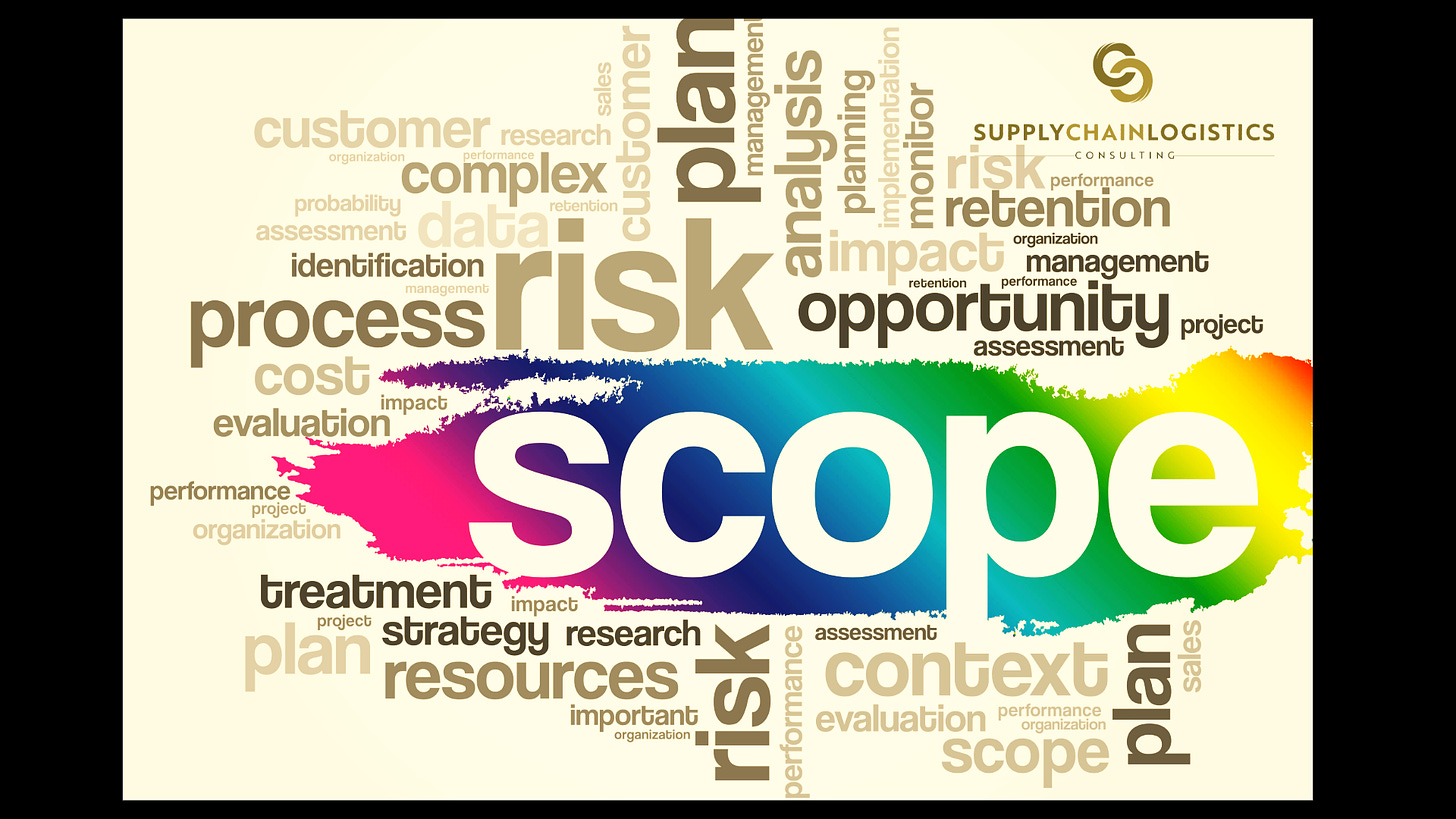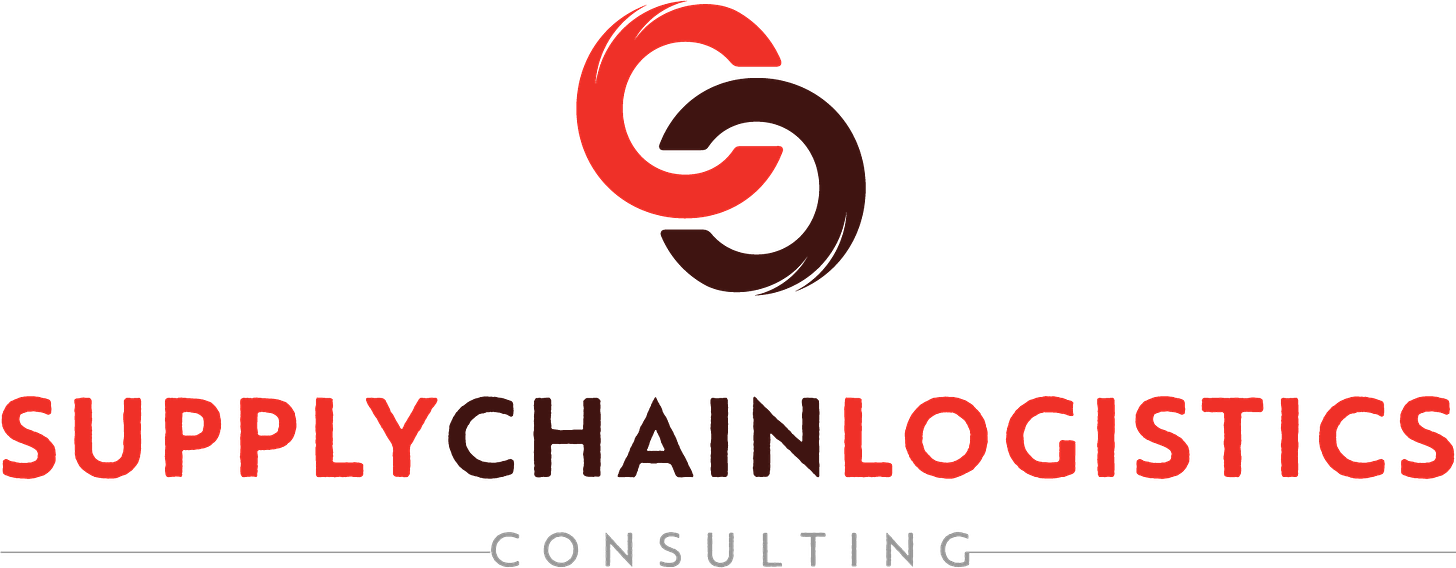Achieve Resiliency: Part 1
“Increase Operational Flexibility and Reduce Supply Chain Disruptions”
In this two-part business paper readers can sharpen their understanding of how supply chain resilience is achieved using the elements of procurement such as strategic sourcing, and supplier evaluations. See how a more robust vendor selection process leads organizations towards attaining positive results related to profitability, innovation, and risk avoidance.

==================================================================
How to Reduce Supply Chain Vulnerabilities
Reducing vulnerability in supply chain management is taking actions and implementing policies that reduce the likelihood of disruption to business operations and that increase overall resilience. Essentially, it is enhancing a company’s ability to manage production of goods or services and to uphold performance standards through unplanned events.
In practice, an invulnerable supply chain could strengthen a company’s agility and bounce back from a disruption. A significant disruption would be one that impacts upstream suppliers and interrupts the flow of critical inputs needed for production. Downstream impacts can disrupt delivery of the product or service to the end customer.
Resilience can be achieved by either creating redundancy or increasing flexibility. While some redundancy is part of every resiliency strategy, it represents sheer cost with limited benefit unless it is needed due to a disruption.
Flexibility, on the other hand, can create a competitive advantage in day-to-day operations. Investments in flexibility can be justified by normal business results without considering the benefits of risk mitigation and cost avoidance.
Strategies For A Robust Supply Chain.
By diversifying a supplier base, companies can reduce overall vulnerability to disruptions (Rice, D, J. and Sheffi, Y., 2005). This is because relying on a single supplier puts the company at risk of potential disruptions such as natural disasters, supplier bankruptcy, or geopolitical issues (Sheffi, Y., 2006).
Having multiple suppliers provides a level of redundancy in the supply chain, allowing the company to quickly switch to an alternative supplier if one is unable to meet their needs (Rice, D, J. and Sheffi, Y., 2005). Furthermore, supplier diversification can also increase a company’s flexibility in terms of negotiating better pricing, terms, and conditions with suppliers.
Supplier evaluations are one of many strategies that executive management can implement to enhance value-based decision making that lead to reduced vulnerabilities in supply chain management and procurement activities (Pal et al., 2013). One important strategy is to establish clear criteria and guidelines for determining what can be outsourced and what should not be outsourced (Nair et al., 2015). This is a strategic element centering on the amount control held and available for the company to exercise anytime.
The Impact of Supplier Diversification for Resilient Companies
The impact of supplier diversification on resilience can be crucial for companies. Supplier diversification refers to the practice of sourcing materials or services from multiple suppliers instead of relying on a single supplier.
(Rice, D, J. and Sheffi, Y., 2005)

The problem is that many companies leave risk management and business continuity to security professionals, business continuity planners or insurance professionals. However, building a resilient enterprise should be a strategic initiative that changes the way a company operates and that increases its competitiveness.
To ensure the resilience of supply chain management in the business’s operations, it is crucial for leaders to thoroughly analyze the status of the sourcing situation and then establish a set of standards. These should form the basis of making decisions with the end goal of more robust operational performance.
The Advantages of a Strategic Sourcing Plan
Supply Chain Management: What is Strategic Sourcing to a Business?
Sourcing is the process of finding and selecting suppliers who can provide the goods or services needed by the business to produce goods or services and eventually deliver to the customer. Strategic sourcing is not a low impact activity or a random decision. It requires careful planning and analysis to ensure that stakeholders are receiving the best value, quality, and service from suppliers while corporate objectives are met.
Business leaders need to consider adding, improving, and integrating plans for strategic procurement into the companies processes and policies.
S&Co., Supply Chain Logistics Consulting Inc.
A strategic sourcing plan is a guide that outlines the goals, objectives, strategies, and actions of supply chain management talent to undertake for procurement activities. It helps to align the procurement of goods and services with the businesses’ immediate needs and high-level priorities. It also helps managers and executives to monitor and measure operational performance, benchmark results, and to quantify savings that can indicate the actual value achieved through the implementation of a strategic plan.
Strategic planning for supply chain management procurement activities provides a structured approach to sourcing which enables identification and selection of the most suitable suppliers for business requirements while achieving other beneficial outcomes for the company.
Strategically integrating diversification of the supplier base may offer businesses greater resilience in times of disruption and can increase competition to get better results on a total value basis. A strategic supply chain management plan for sourcing activities can have a positive impact beyond receiving the lowest price for required products and services.
Why Prioritizing Total Value for Sourcing Decisions is Strategic.
Value-based purchasing has the potential to impact business operations in a highly profitable way. Considering the unknown opportunities and seeking to quantify them in a total value approach using a supply chain management procurement plan, business leaders can unlock and exploit advantages that may change the overall service, quality, and cost of production.
By seeking the greatest total value over lowest price, businesses can:
- Forge stronger relationships with suppliers, and
- Ensure quality and incentivize innovation, and
- Support environmental, social, and governance (ESG) goals, and
- Make more informed procurement decisions, that
- Strategically align spending with corporate objectives.
Strategic business leaders can explore the power of value-based purchasing to discover new possibilities through supply chain management.
Key Strategies for Implementing Value-Based Decision Making
Value-based decision making in supply chain procurement activities should be a key focus for executive management. It requires that suppliers are evaluated through a process of due diligence with aspects of safety, compliance, quality, capacity, and financial capacity considerations in evaluative factors during the initial selection process.
Supplier Evaluations also ensure quality and efficiency measures support the business operations. Effective supplier evaluation is crucial to making corporately aligned decisions through procurement actions. Executives should prioritize supplier evaluation processes that integrate standards such as quality, efficiency, reliability, and sustainability into each project process and may use supply chain management policies to integrate those practices throughout the entire organization.

The Positive Impacts of Strategic Sourcing
Lower Prices for Goods and Services
A strategic sourcing plan helps you identify and eliminate unnecessary or inefficient spending on goods or services. It also helps you negotiate better prices and terms with your suppliers. It also helps you streamline your procurement process and reduce administrative costs and delays.
Improve quality and service.
A strategic sourcing plan helps you define and communicate your quality standards and expectations to your suppliers. It also helps you evaluate and select the best suppliers who can meet or exceed your requirements. It also helps you foster long-term relationships and trust with your suppliers who can provide consistent and reliable delivery and support.
Reduce risk and uncertainty.
A strategic sourcing plan helps you assess and mitigate the potential risks and challenges associated with your sourcing activities. These may include supply disruptions, quality issues, contractual disputes, or ethical concerns. It also helps you anticipate and adapt to the changing market conditions and customer demands that may affect your sourcing needs.
Increase Innovation and Unlock Value
Planning increases innovation and unlocks greater value. A strategic sourcing plan helps you leverage the expertise and capabilities of your suppliers who can offer you new or improved solutions for your business problems. It also helps you collaborate and co-create with your suppliers who can provide you with more value-added services or benefits.
Higher Profitability and Optimized Resources
A strategic sourcing plan is a valuable tool that can optimize procurement activities and improve outcomes. By having a strategic sourcing plan for supply chain management procurement, companies achieve higher savings, better quality, improved service, encourage innovation, and realize greater value from suppliers.
Planning for Sourcing Activities
How to create and implement a strategic sourcing plan for your business.
- Analyze your current sourcing situation and identify your sourcing goals and objectives.
- Develop a strategic sourcing plan that suits your business needs and priorities.
- Execute your strategic sourcing plan and manage your sourcing activities and relationships with suppliers.
- Monitor and measure your sourcing performance and results and provide you with feedback and recommendations.
Why is Procurement Vital to the Company’s Strategy?
Procurement is a vital process that can affect the success and profitability of your business. To make the most of supply chain management sourcing activities strategically plan that can guide the selection process and post-award activities for the suppliers that will fulfill your essential business requirements.
The Benefits of Strategic Planning for Supply Chain Management:
Optimized resource deployment through cost management procedures, and
Gains in efficiency by reducing the time spent on sourcing activities, and
Improved total quality and level of service received with established standards, and
Mitigated risk and elimination of uncertainty through better contracted agreements, and
Increased innovative solutions and discovery of greater value with key suppliers.
Planning is essential for businesses to effectively manage supply chain management activities. By following a strategic sourcing plan business leaders can optimize performance for positive results to achieve business goals.
Supply Chain Management: Procurement’s Function
In supply chain management procurement has a critical function, impacting the profitability of operational activities throughout the organization and directly affecting overall performance.It is imperitive that business leaders understand the function of procurment is strategic rather than administrative, thus adding potential to fulfill corporate objectives and increase the overall profitability of the company by attracting customers, reducing costs, eliminating risk, and incorporating innovation into the underlying structure of an organizaton.
QUOTATIONS
Building a resilient enterprise should be a strategic initiative that changes the way a company operates and increases its competitiveness. Reducing vulnerability means reducing the likelihood of a disruption and increasing resilience — enhancing the organization’s ability to bounce back from a disruption.
Resilience, in turn, can be achieved by either creating redundancy or increasing flexibility.
While some redundancy is part of every resiliency strategy, it represents sheer cost with limited benefit unless it is needed due to a disruption. Flexibility, on the other hand, can create a competitive advantage in day-to-day operations.
Rice, D,J. and Sheffi, Y., 2005 https://sloanreview.mit.edu/article/a-supply-chain-view-of-the-resilient-enterprise/
——————————————————–
The study further provides a counterpoint to the existing perspective within the supply chain risk management literature that institutional experience of managing past supply chain disruption events prepares the organization to deal with future disruption events. By adopting industry 4.0 capabilities, firms can develop supply chain risk resilience from disruption events.
Singh N., and Singh, S. https://www.emerald.com/insight/content/doi/10.1108/BIJ-10-2018-0346/full/html
References
CIPS, The Chartered Institute of Procurement & Supply. Website. Accessed 2024-07-22. Available at: https://www.cips.org/intelligence-hub/procurement/what-is-procurement.
Dunn, A G., & Testa, N M J. (n.d). Sovereign Supply Chains & Essential Reshoring. Available at: https://gdiconsult.com/images/blog/65694ba9e56bc/pdf/Sovereign-Supply-Chains-And-Essential-Reshoring.pdf
Nair, A., Jayaram, J., & Das, A. (2015, June 11). Strategic purchasing participation, supplier selection, supplier evaluation and purchasing performance. https://doi.org/10.1080/00207543.2015.1047983
Pal, O., Gupta, A K., & Garg, R. (2013, September 1). Supplier Selection Criteria and Methods in Supply Chains: A Review. https://zenodo.org/record/1088140
Rice, D, J. and Sheffi, Y. (2005) “A supply chain view of the resilient enterprise,” MIT Sloan Management Review, 47(1),p. 41-48. Available at: https://sloanreview.mit.edu/article/a-supply-chain-view-of-the-resilient-enterprise/
Rice, D, J. and Sheffi, Y. (2005) A supply chain view of the resilient enterprise. Available at: https://dialnet.unirioja.es/servlet/articulo?codigo=1328931
Sheffi, Y. (2006) The resilient enterprise: overcoming vulnerability for competitive advantage. Available at: https://doi.org/10.5860/choice.43-3481.
Singh, N.P. and Singh, S. (2019), “Building supply chain risk resilience: Role of big data analytics in supply chain disruption mitigation”, Benchmarking: An International Journal, Vol. 26 No. 7, pp. 2318-2342. Available at: https://doi.org/10.1108/BIJ-10-2018-0346 .




